5 tips to follow when designing a custom T-shirt
Find out how to create custom T-shirts
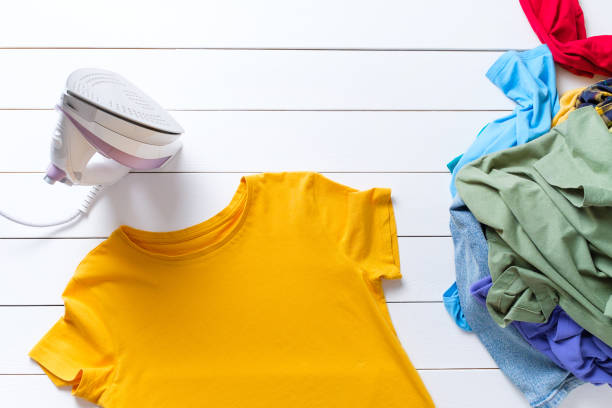
Designing a T-shirt can seem daunting, especially when starting from a blank canvas. Whether designing for yourself or selling T-shirts online, your designs should evoke positive emotions and entice people to wear them frequently. You need ideas that appeal to your target audience.
This article will explore vital tips for creating exceptional T-shirts. You’ll learn how to find the best ideas and create high-quality T-shirts that end users will appreciate.
Get up to $50 off on Vistaprint
Vistaprint can help you design custom t-shirts by allowing you to upload your designs or choose from a variety of templates. Using high-quality printing technology, they ensure vibrant, durable prints on various t-shirt styles and sizes. The process is user-friendly, making personalized apparel accessible for individuals and businesses. Save up to $50 on Vistaprint with the code TECHRADAR50.
1. Research existing designs
The first step in designing T-shirts is to research existing designs and ideas. People often make the mistake of getting ahead of themselves without spending time on market research. You might think you have the best idea, but that doesn't mean people will like it. Looking at existing top-selling designs hints at what your target audience will appreciate.
Here are some questions to assist you in market research and brainstorming:
What are you designing T-shirts for? What is your cause?
What's your goal with designing T-shirts? Maybe you want to create your brand and make money or raise awareness for a popular cause like cancer, mental health, and autism. You may be a music enthusiast who wants to make money selling branded merchandise of popular bands. Any reason is okay. What’s important is defining your target audience accurately.
What emotions should your T-shirt design evoke?
Are you a pro? Subscribe to our newsletter
Sign up to the TechRadar Pro newsletter to get all the top news, opinion, features and guidance your business needs to succeed!
Your target audience determines the emotions you want your T-shirt to provoke. For example, if you're selling to rock band fans, use bold and bright colors that evoke the feelings of a rave. The ideal design for this audience is flashy graphics on a plain black or white background.
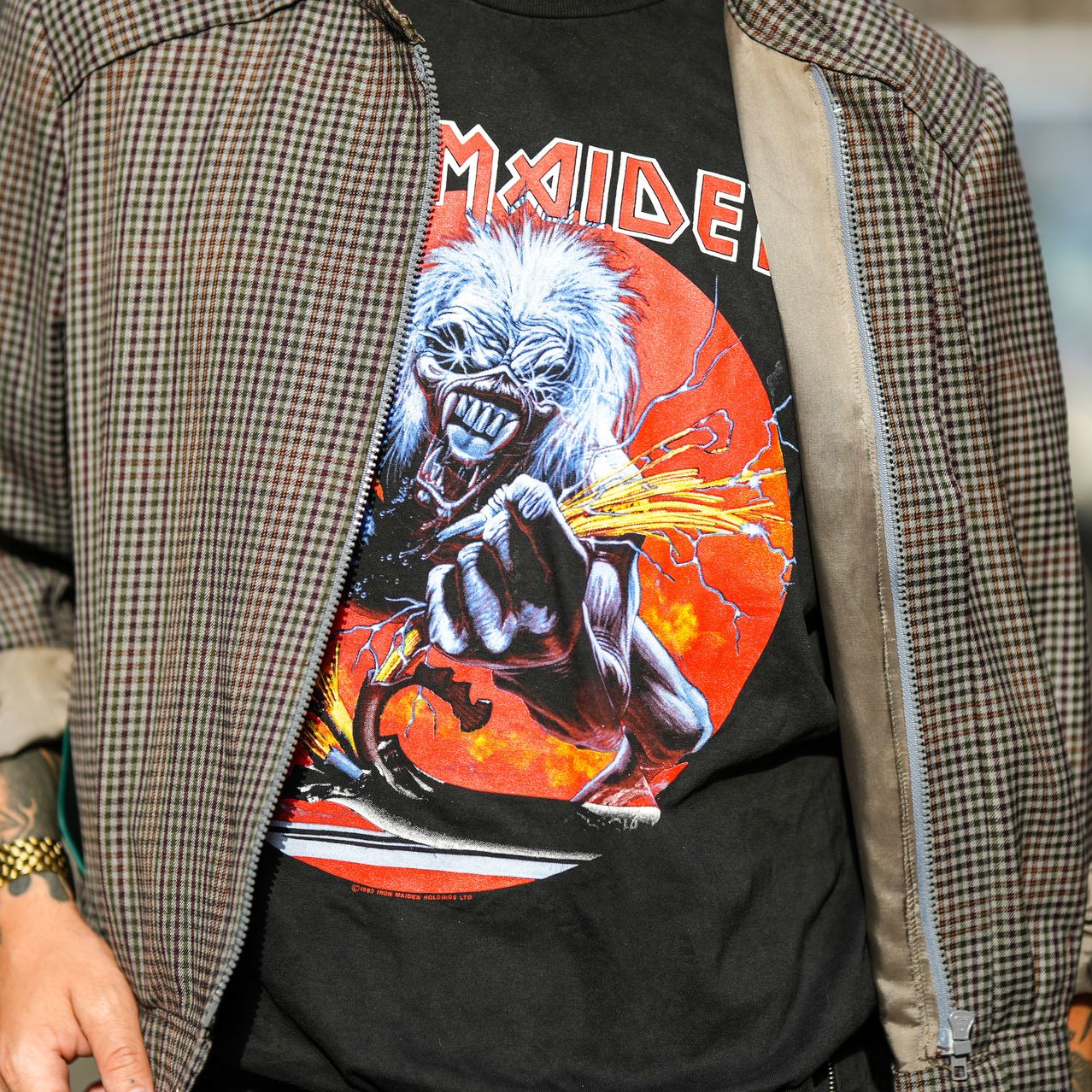
In contrast, when designing T-shirts for a nature-themed fair, you need calm colors and graphics that evoke feelings of relaxation. If the T-shirts are vintage, use graphics that play on feelings of nostalgia. Every target audience requires a unique color blend to evoke the appropriate emotions.
Who would wear your T-shirts?
Which demographics are you creating T-shirts for? Are you designing for men, women, kids, or all of them? What age range are you targeting? Remember that some designs can be appropriate for adults but not for kids. Some statements can be suitable for the younger generation but unsuitable for older people. You must consider your target demographics during the design stage.
When would people wear your T-shirt designs?
Consider the situations and events when customers would feel comfortable wearing your T-shirt designs. Are the T-shirts suitable for corporate functions, family dinners, vacations, parties, or casual outings? Have a clear picture of when your T-shirts should be worn and incorporate this factor to create appropriate designs.
2. Use high-quality graphics to create the best T-shirts
You must use high-quality graphics for your T-shirt designs. Otherwise, you'll end up with T-shirts that look cheap and unattractive to buyers. Use images of the highest possible quality so that printers can output equally high-quality designs.
The format for T-shirt designs is usually a high-resolution image file in standard PNG or JPEG format or vector format (SVG or AI). A vector format is the best because it retains its quality even when scaled up or down, while standard PNG or JPEG images lose some quality when scaled.
If you’re using a print-on-demand service, you’ll be given image standards to adhere to, including resolution, file size, dimensions, format, and more. Ensure you adhere to these standards, or you risk creating poor-quality T-shirts that won’t sell.
3. Typography
You must pay attention to typography when creating T-shirts. This factor is essential if your T-shirt design includes text. You need bold fonts that are easy to read, and you should choose fonts that fit your target audience. For example, kids' shirts can use overtly stylish fonts that evoke playfulness, but adult shirts require bolder fonts that evoke seriousness.
When creating T-shirts for school-themed events, you can use academic fonts like Helvetica, Arial, and Times New Roman to make them fit better. When creating T-shirts for technology events, you can use computer-style fonts like Old Standard TT to make them fit the moment.
Use proper letter and line spacing to create legible and visually appealing text. The appropriate spacing depends on the font type and size, but the general rule is between 120% and 130% on the font size. For instance, if your font is 10 points, the proper line spacing is 12 to 13 points.
You can combine multiple fonts, but limit it to 2 or 3 to avoid confusion. You can bold or italicize important words and place them near the top of the design. Take a look at the vintage T-shirt in the below image. Notice how the “Original” uses a stylish and bigger font to differentiate it from the rest, while the other texts have a simple and bold font. This design illustrates how good typography helps create a stunning T-shirt.
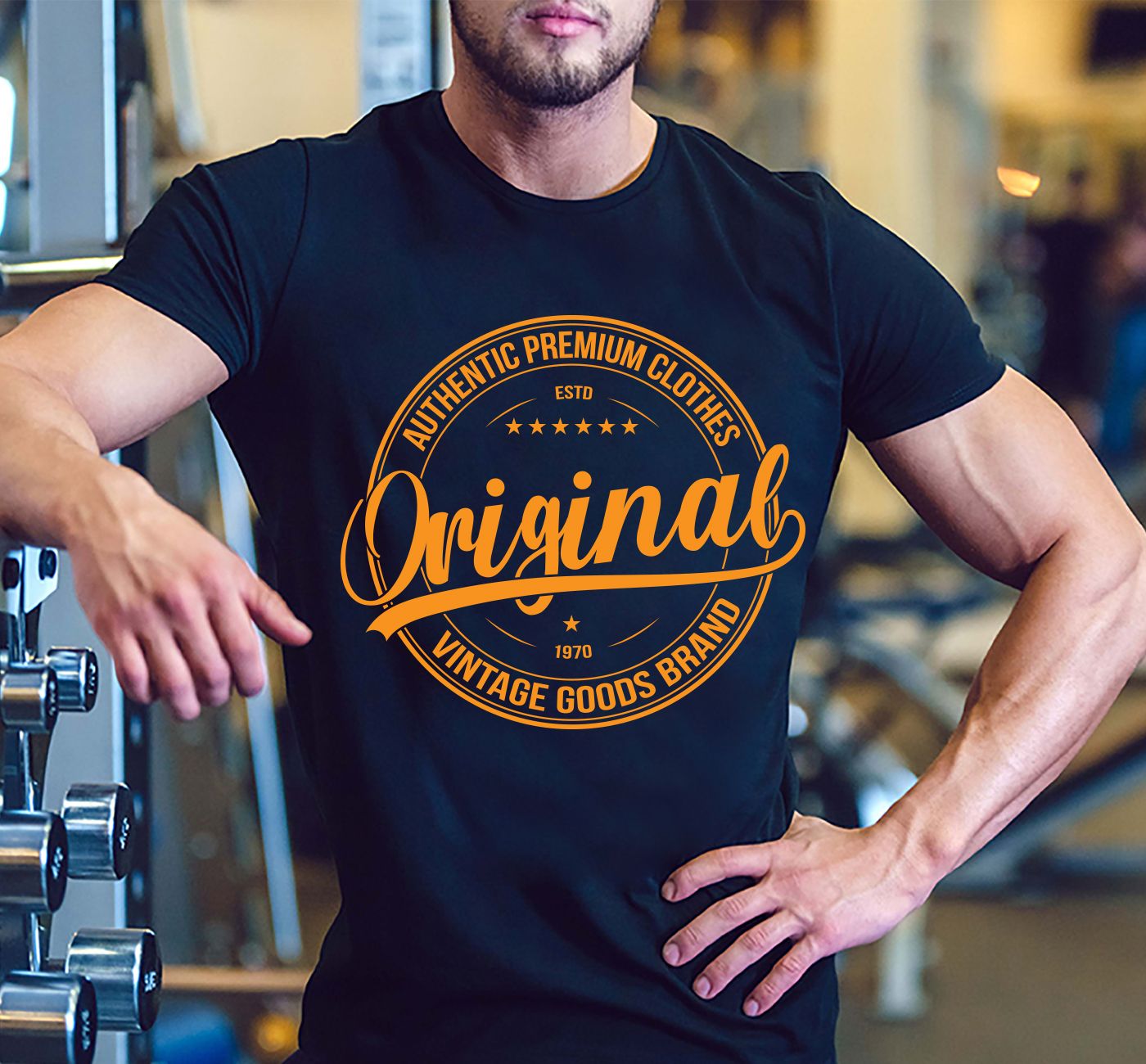
Other typography tips to note include:
- Avoid fonts that are difficult to read, even if they look stylish.
- Pay attention to punctuation and how they look in different fonts.
- The text should be contrasted with the T-shirt’s background color. Otherwise, it’ll be hard to read and spoil the whole design.
- Simplicity is a strength when designing T-shirts. Avoid too many text elements and intricate details.
- When designing T-shirts for a specific brand, check what fonts the brand uses and incorporate them in the T-shirt design.
4. Pay attention to material quality
Your T-shirt design is only as good as the material it’s printed on. No matter how stunning your graphics are, printing them on low-quality material negates the whole point. No one wants to wear a low-quality shirt and look scrappy, so pay attention to the material on which you’re printing your design.
When using a print-on-demand service, you should get precise details about the material for your T-shirts. Choose strong fabrics that don’t wear out after a few washes. Most T-shirt makers use cotton, polyester, or a blend of both materials. Cotton is durable, comfortable, and has a high absorbency rate. Polyester is sturdy, durable, and less prone to color fading, making it a suitable alternative to cotton. Blending cotton and polyester lets your customers enjoy the benefits of both materials.
It’s advisable to order a sample of your T-shirt design first to evaluate its quality. You can seek third-party opinions about the quality, especially from your target audience. Don’t hesitate to voice concerns and request changes if you are unsatisfied with the quality.
Consider how the designs will be imprinted on the material. The most common choices are:
Direct-to-garment (DTG)
Direct-to-garment (DTG) printing entails spraying ink directly onto the T-shirt material. The ink penetrates the fabric to create the required design, similar to printing a paper document. DTG printers can print a wide range of colors, fonts, and graphics. As mentioned, use the highest-quality graphics to get excellent results.

DTG printers have a limitation in handling transparent graphical elements. When a printer encounters a transparent element, it tries to fill in the gaps by spreading ink over the area, and you’ll notice colored gaps on the final print. The best way to avoid this mishap is to use only solid colors in your designs if you know you’re printing with the DTG method.
Embroidery
Embroidery entails stitching designs onto clothing using silk or cotton. It is much more durable and elegant than DTG printing. However, it is also significantly more expensive because of the required material and labor to create embroidered T-shirts.
The rule of thumb for embroidery is to keep the designs small because of costs. Embroidery uses special file formats like .dst and .exp instead of the standard PNG and JPEG image formats. A .dst file is the best because it works for virtually any embroidery machine.
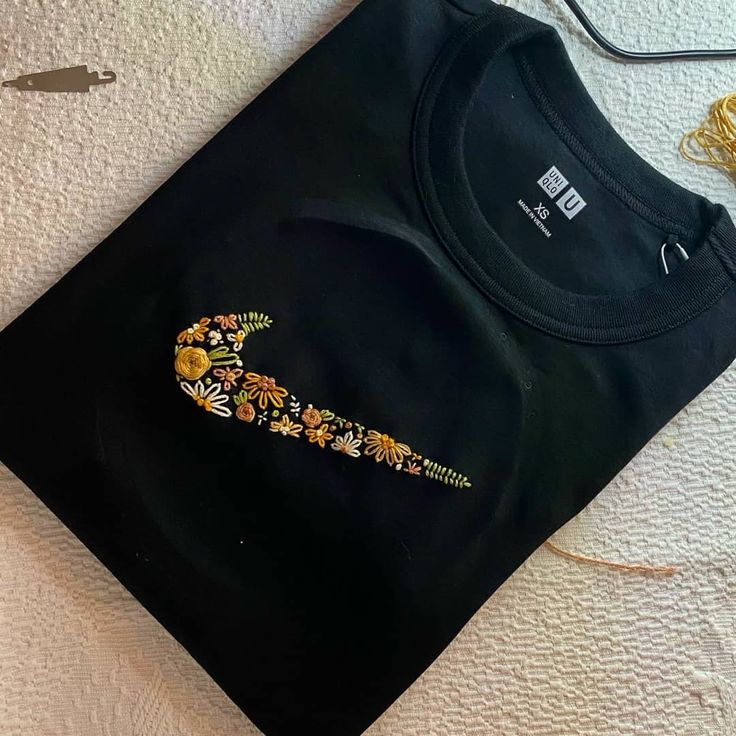
Sublimation
Sublimation is a printing process that uses heat to imprint dye on materials, similar to drawing a tattoo. It's also called the all-over print method because it lets you cover a T-shirt with designs seam to seam. This method is commonly found in sports jerseys.
Sublimation is the best choice if you want your design to cover most of the T-shirt material instead of being limited to one segment, like the top or center. Sublimed prints are more permanent and last longer than DTG because the design doesn't peel over time. Sublimation is more expensive than DTG printing, but the longer durability makes it worthwhile.
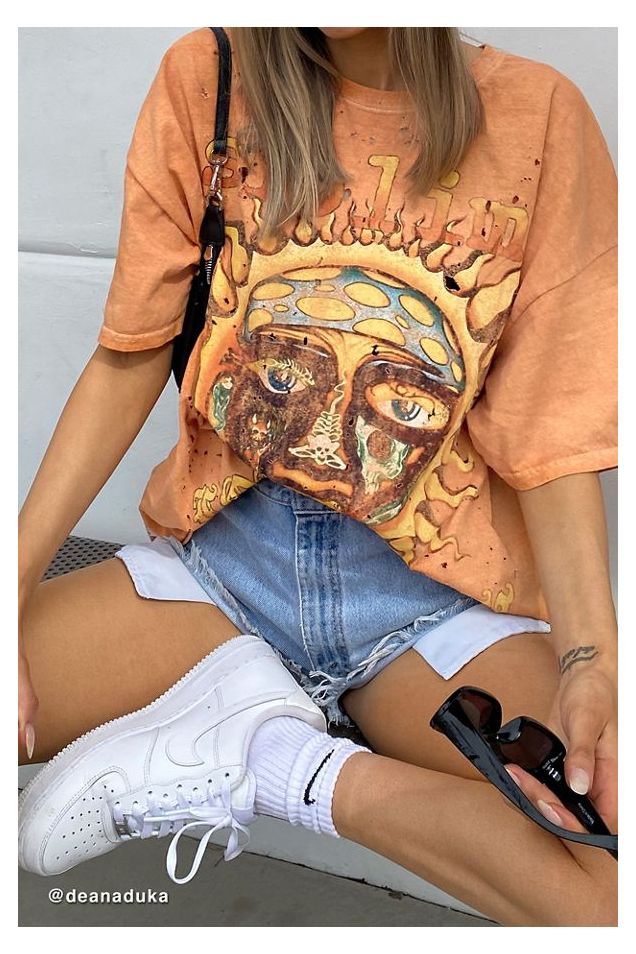
Plastisol Transfers
Plastisol transfer is an indirect type of screen printing. Instead of printing designs directly on the T-shirt, the design is first put on heat transfer paper before being transferred to the T-shirt. This method is more economical than DTG printing, but the drawback is that you can’t print photo T-shirts. It’s also unsuitable for printing large volumes because each T-shirt requires its separate paper.
The material you choose depends on your target audience and the purpose of your T-shirts. For example, if you’re targeting the luxury segment, embroidery is the way to go because of its elegance. If you’re mass-printing merchandise for a musical band, DTG is preferred because of its affordability. Sublimation is the best choice if you want a stylish T-shirt covered end to end with designs.
5. Keep the design simple
Less is more when designing T-shirts. The goal should be to keep your T-shirt design as refined and polished as possible. Anyone who glances at the design should understand it without stress. To achieve this simplicity, it's advisable to focus on a single image or idea and remove any element that distracts from it. Focus mainly on what conveys the design message.
Bonus tip: T-shirt styling
Your T-shirt styling has a sizeable impact on sales. There are many T-shirt styles, including polos, vests, sweatshirts, drop cuts, mandarins, crew-necks, etc. It's good to have your design in multiple styles to cater to your target audience.
Always check your designs on multiple styles before placing them for sale. For example, a design might look stunning on a v-neck but not on a polo. Testing your design on multiple styles helps you identify any flaws and make the required adjustments, such as changing the logo placement or using a different printing method.
How to create custom T-shirts
Creating custom T-shirts has become easier than ever, thanks to the rise and ubiquitousness of print-on-demand services. The design process is also easier than ever, thanks to the proliferation of design software globally.
For instance, Canva is a popular design app for everyday users. It enables people who are not design experts to try their hand at crafting enticing T-shirts for their target audience.
Don’t hesitate to seek external help if you need it. You can hire local graphic designers or seek freelance designers on platforms like Upwork and Fiverr. Check customer reviews to judge the caliber of a designer’s work before making a final choice.
Consider why you’re designing T-shirts. Are you creating them for yourself or to sell to other parties? Either option is fine if you follow the tips mentioned in this article.
Beware of copyright issues if you’re selling themed merchandise to third parties. Get explicit permission before altering or reusing other people's work. Seek licensing and selling agreements if you sell T-shirts with a copyrighted brand. For example, if you're designing action hero-themed T-shirts, you might need permission to use copyrighted virtual characters in your design. Failure to do so might get you sued and on the hook for a significant financial penalty.
Your T-shirt design significantly impacts its costs because some printing methods and materials are more expensive than others. As mentioned, embroidery costs much more than direct-to-garment printing and other printing methods. The design determines whether the T-shirt sells or not, so it’s helpful to follow the good practices we’ve mentioned.
Stefan has always been a lover of tech. He graduated with an MSc in geological engineering but soon discovered he had a knack for writing instead. So he decided to combine his newfound and life-long passions to become a technology writer. As a freelance content writer, Stefan can break down complex technological topics, making them easily digestible for the lay audience.

